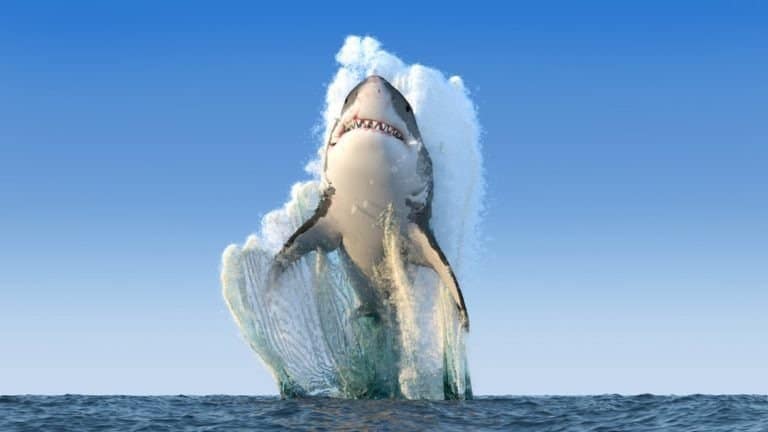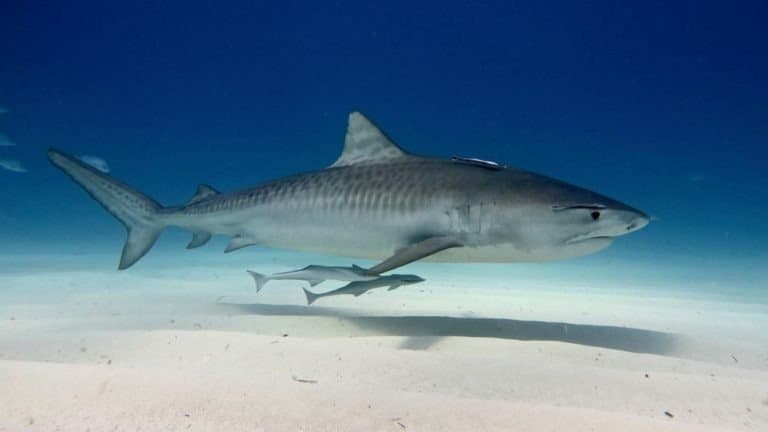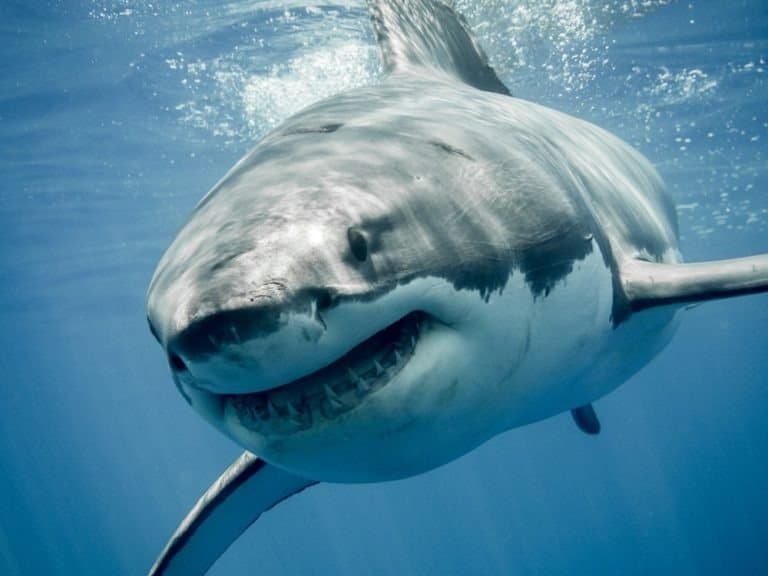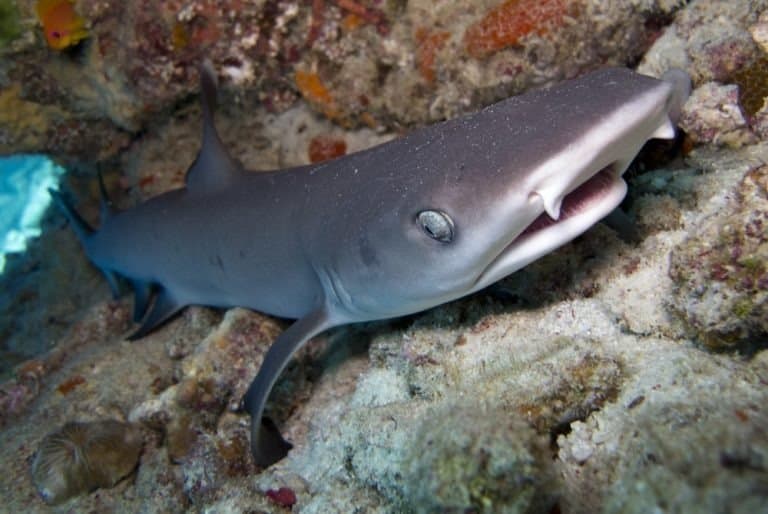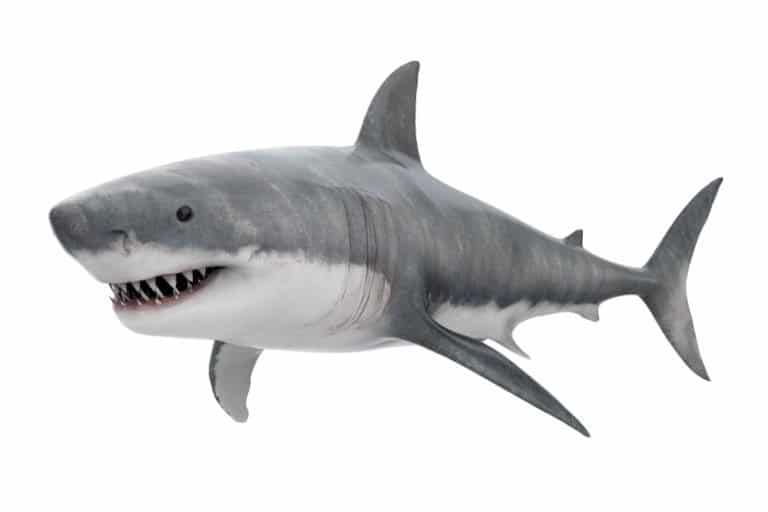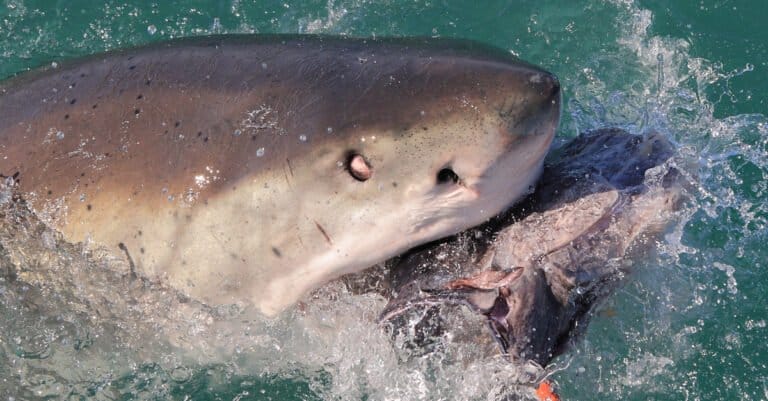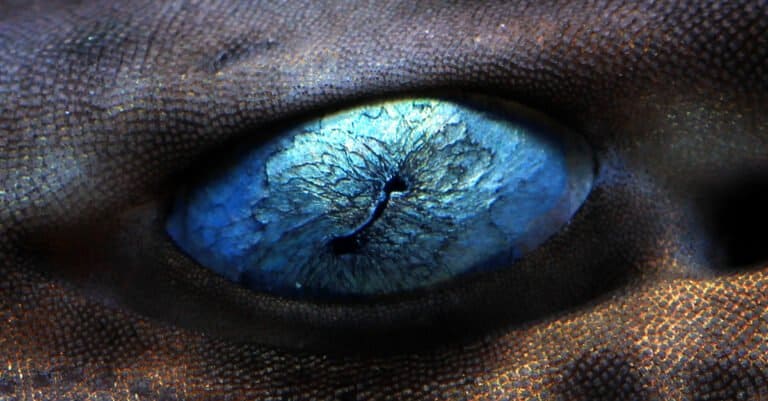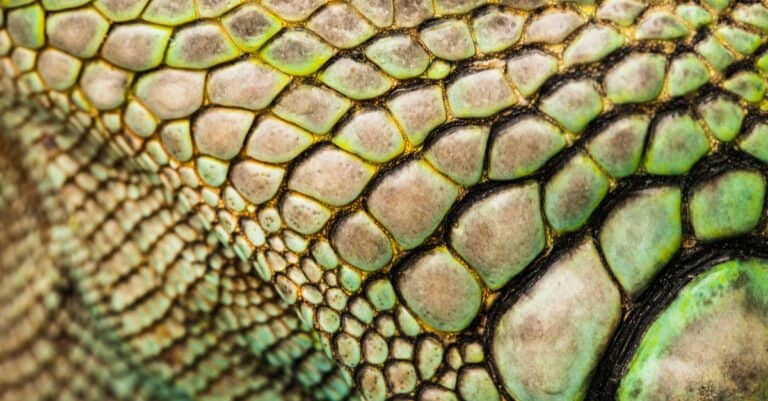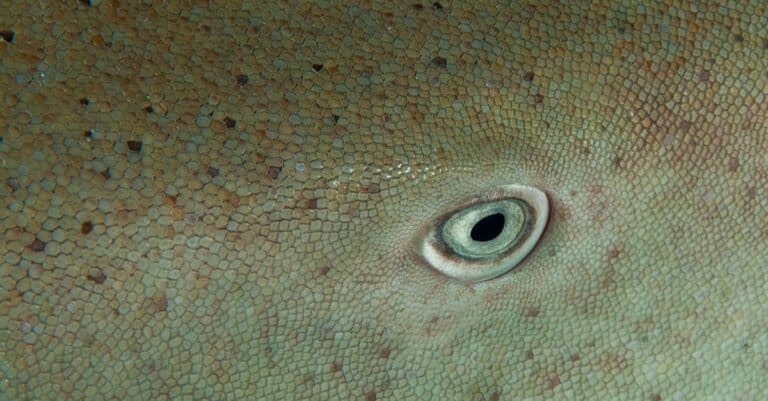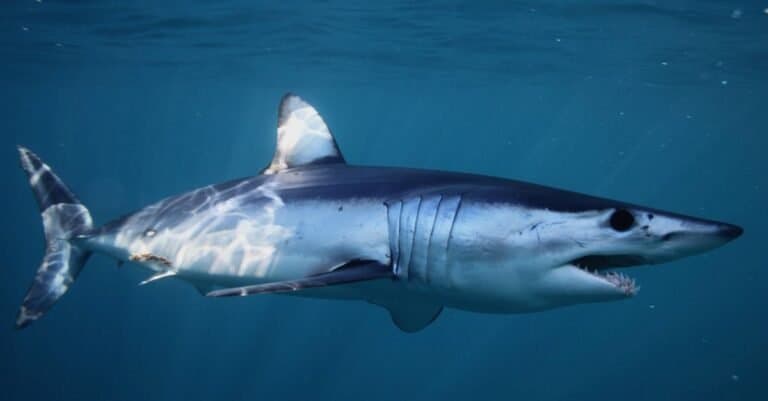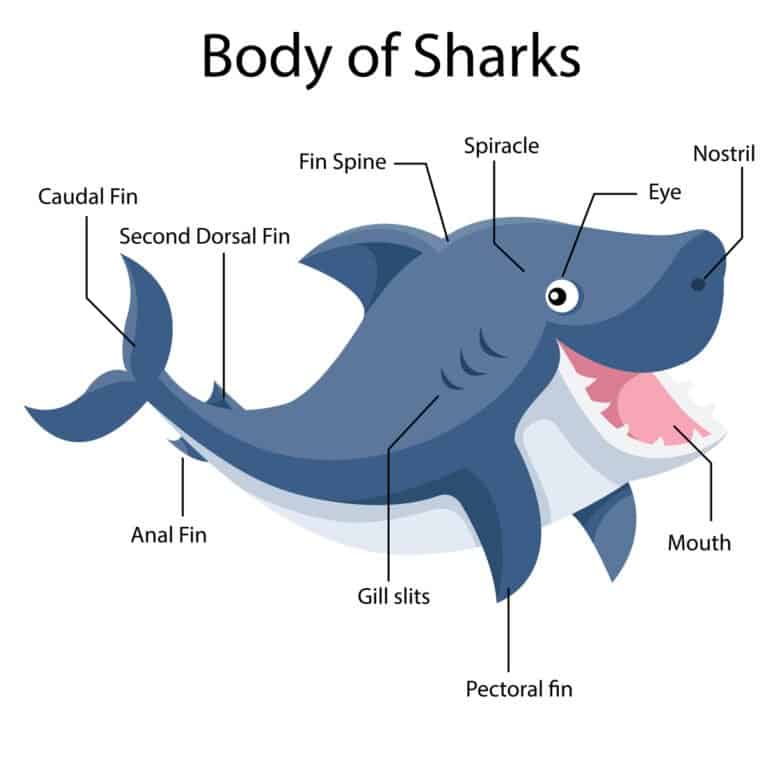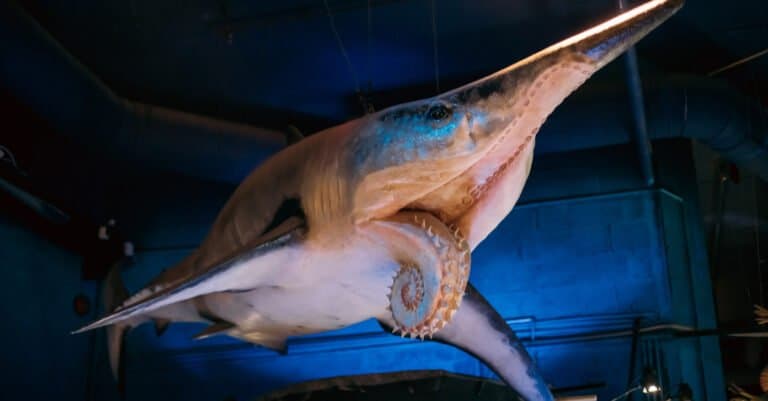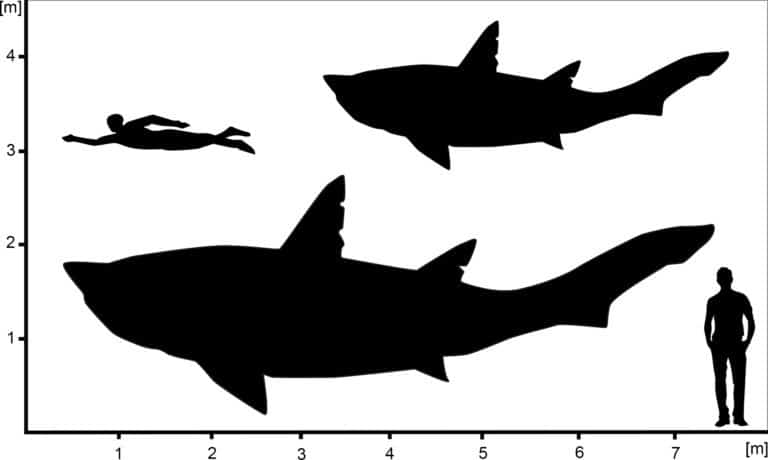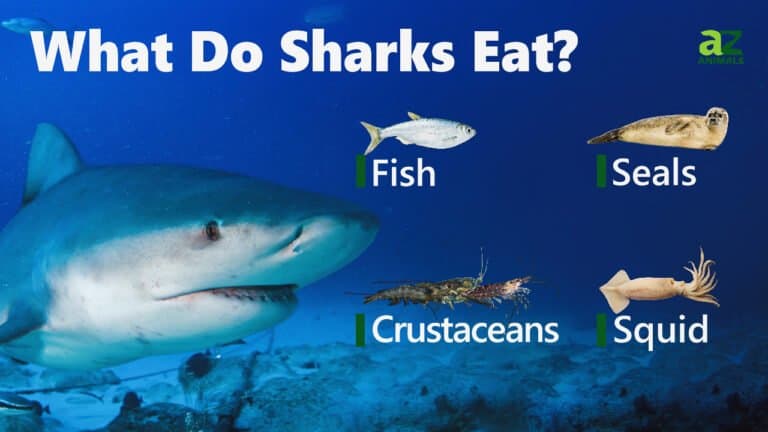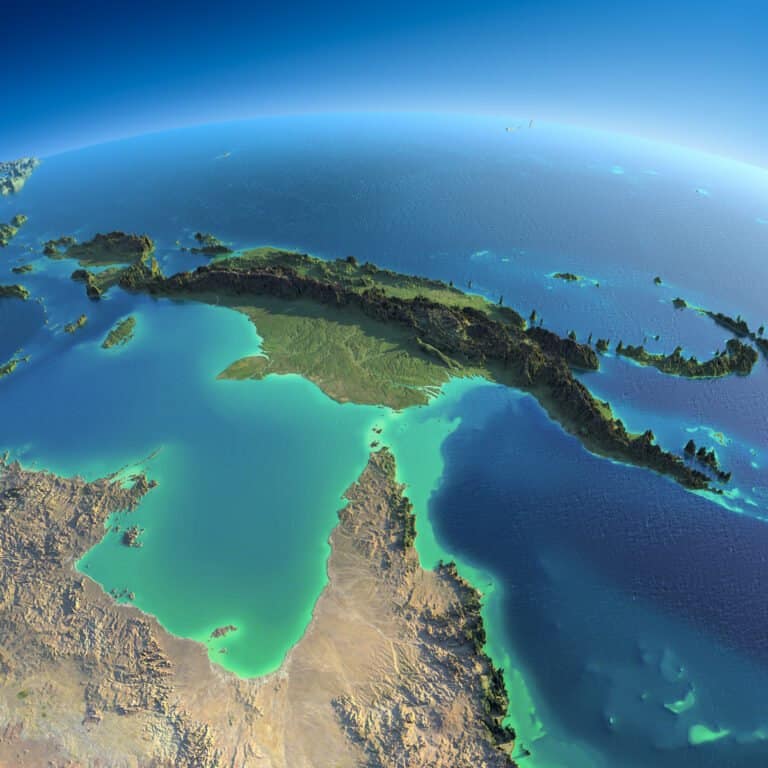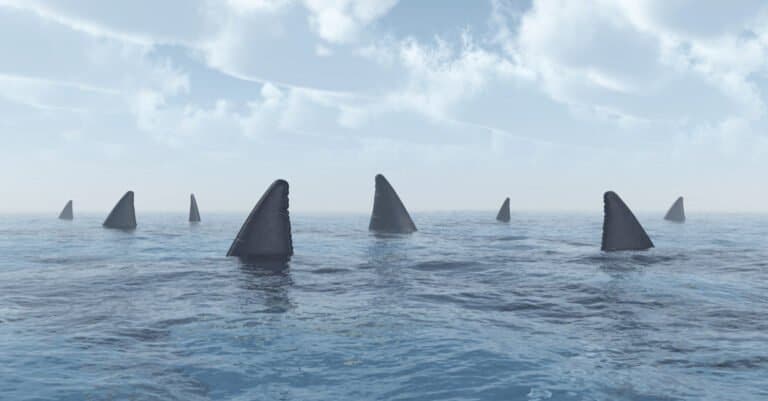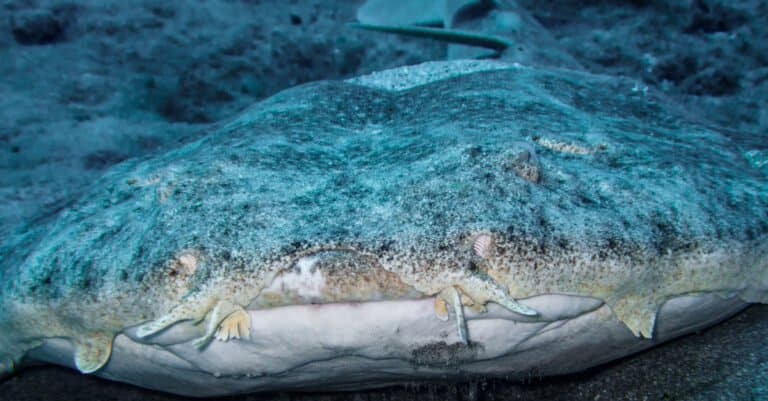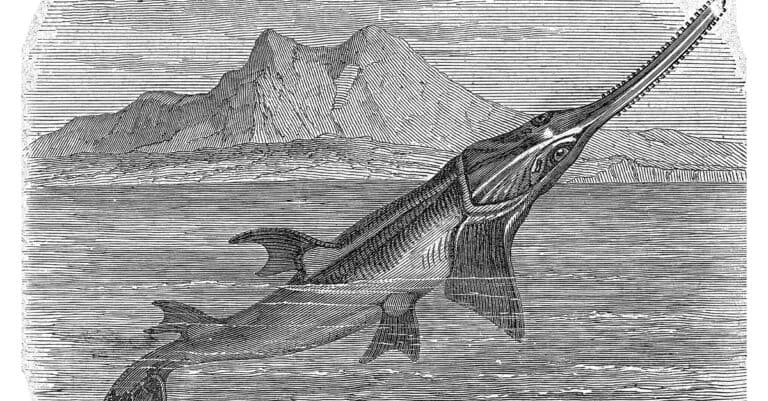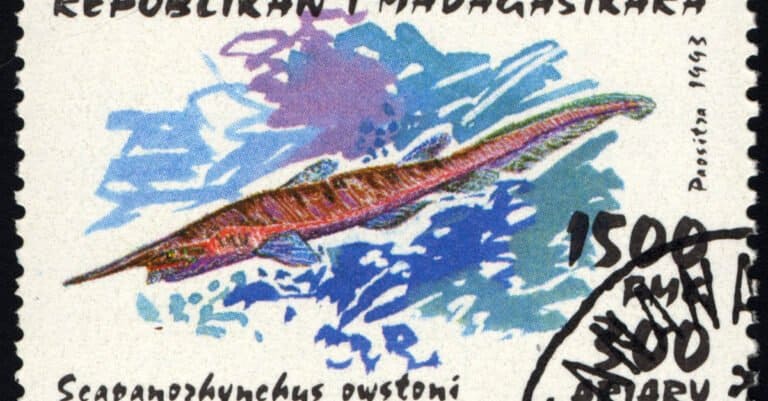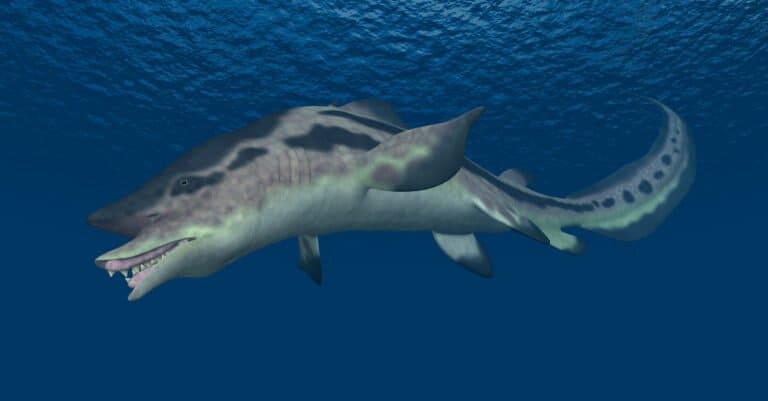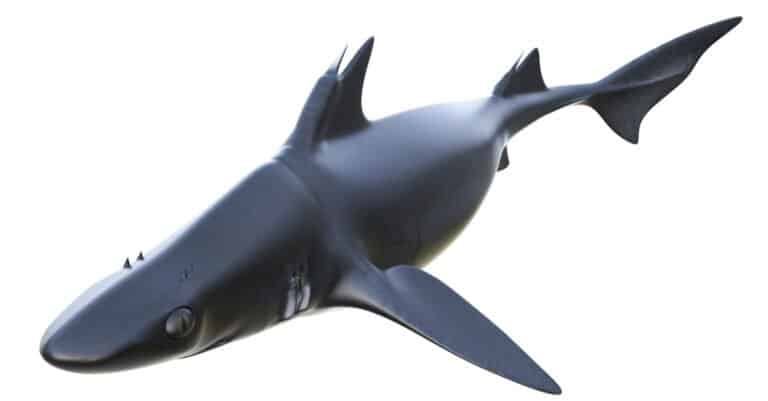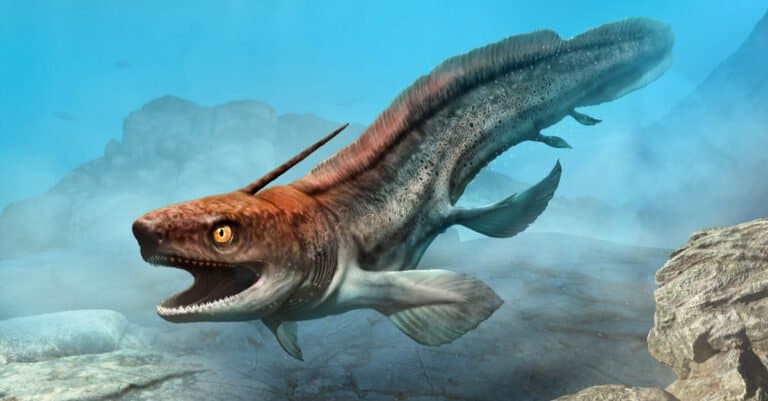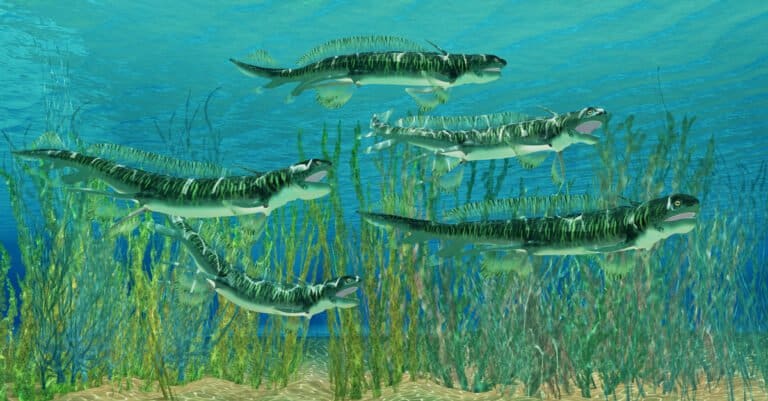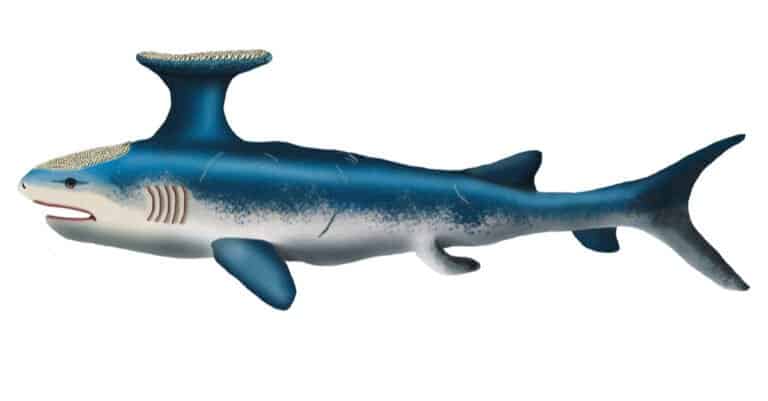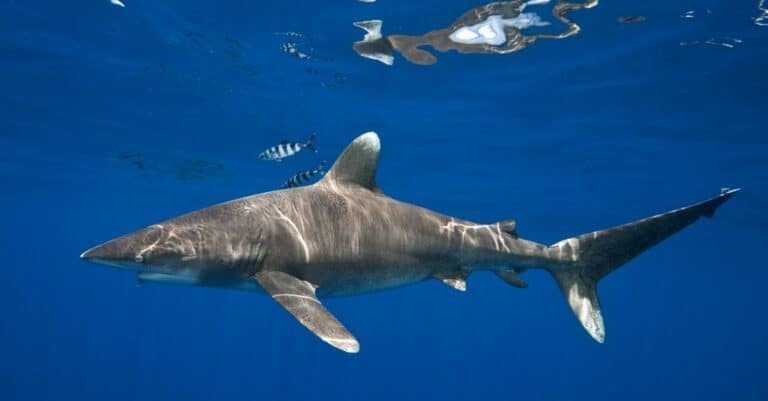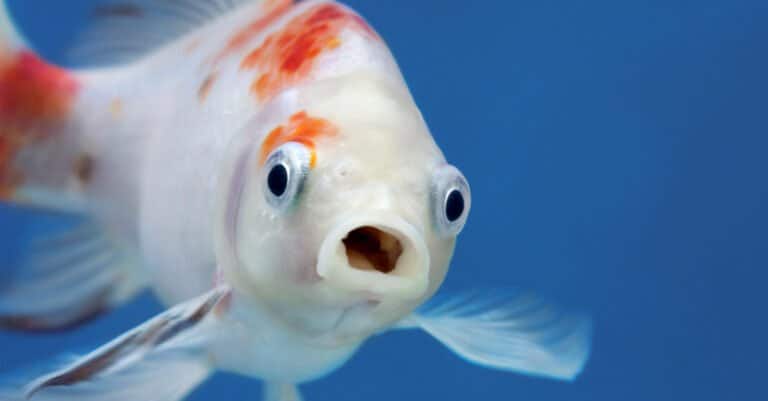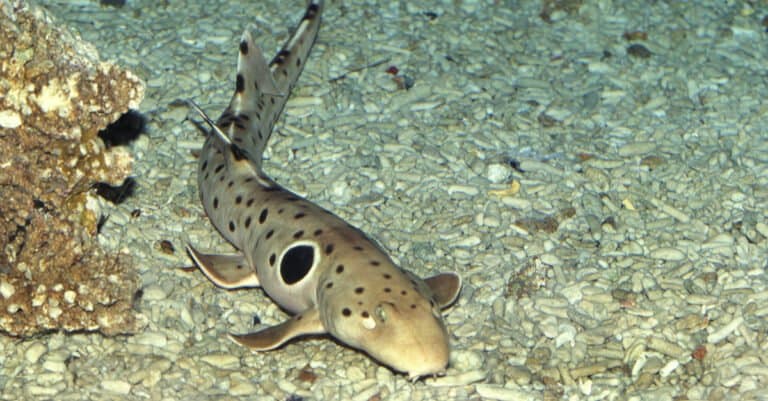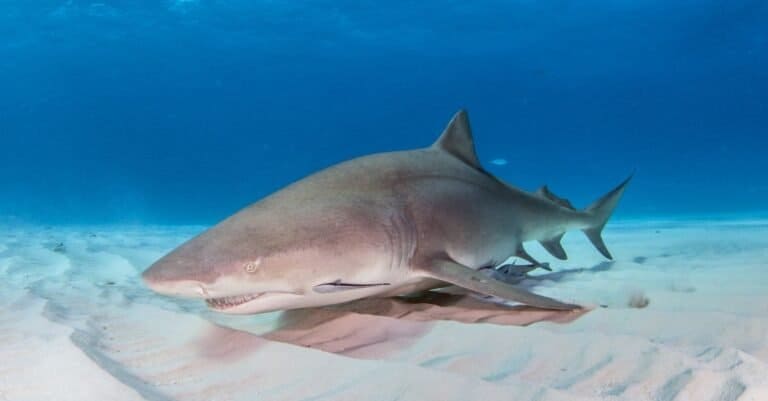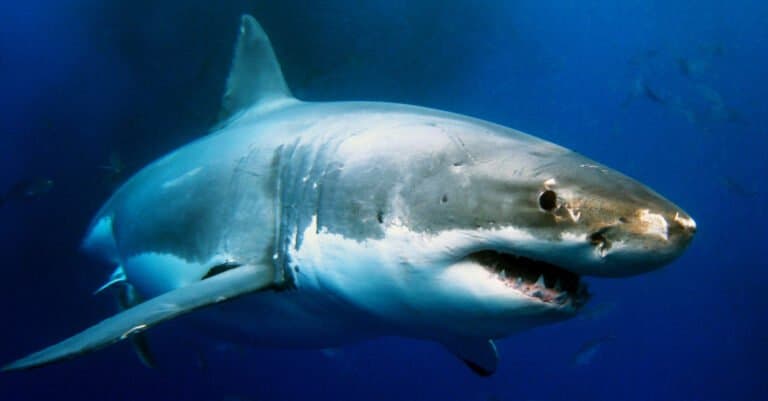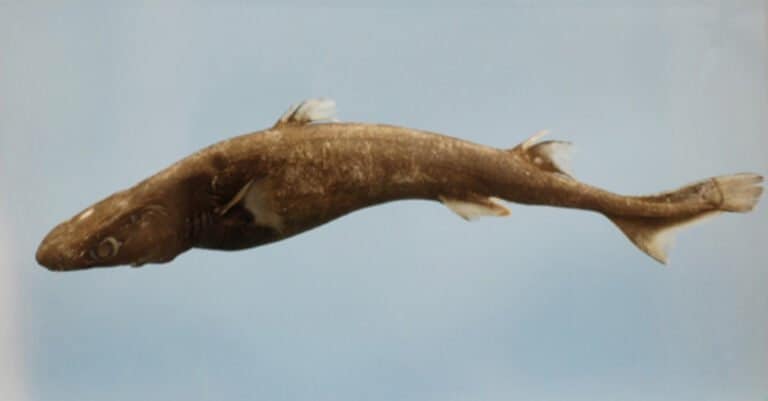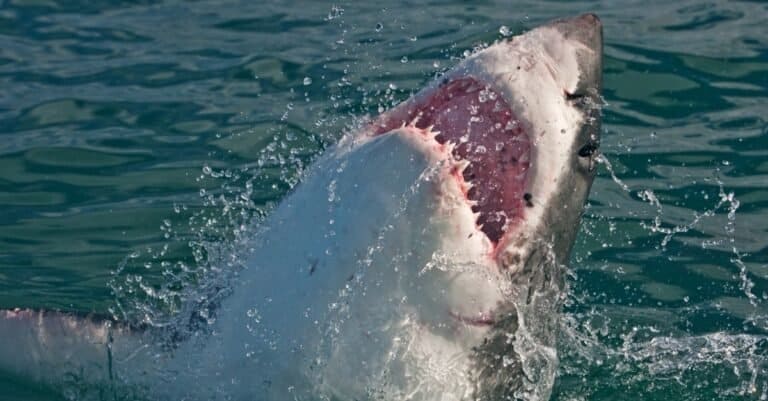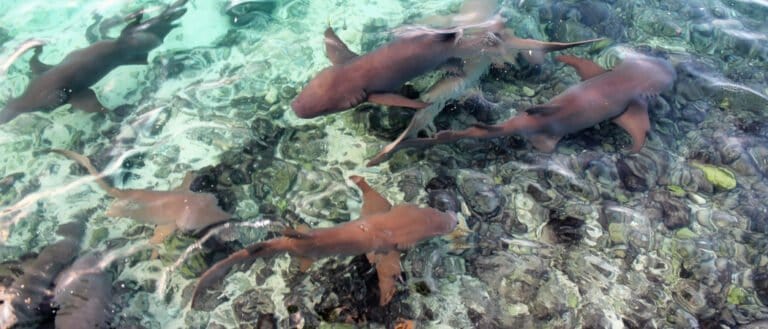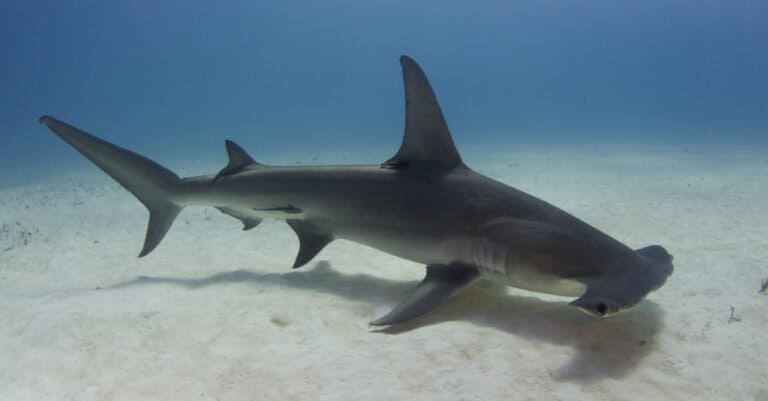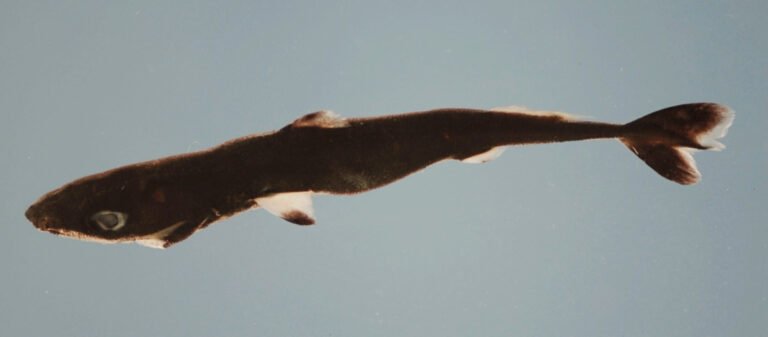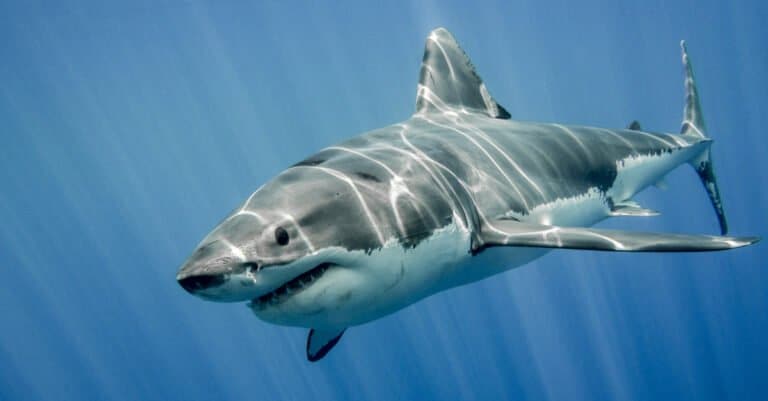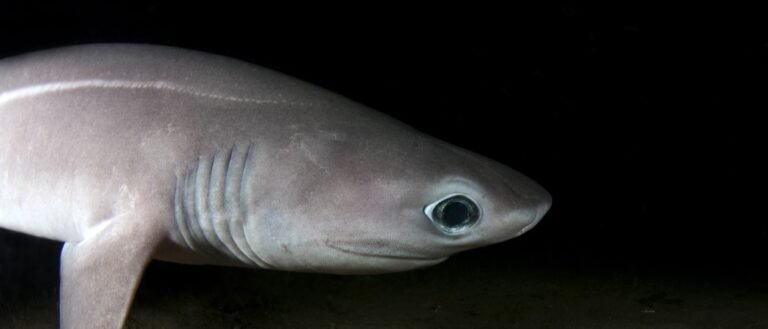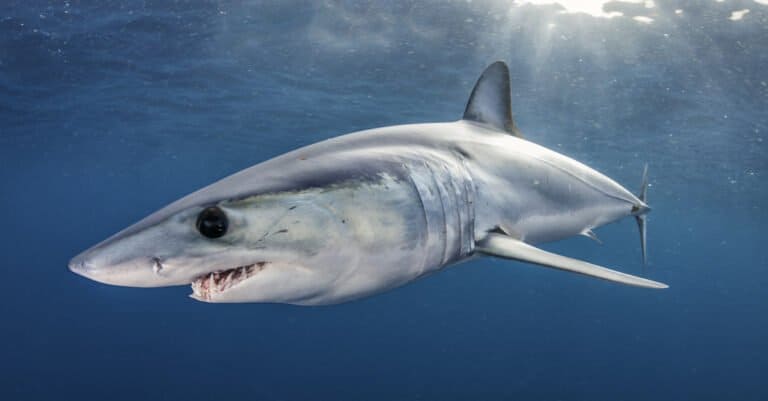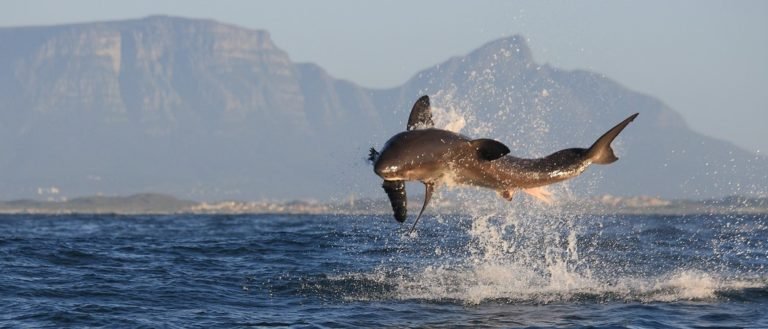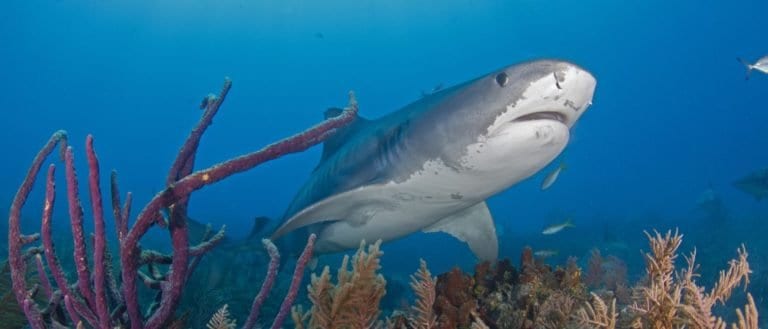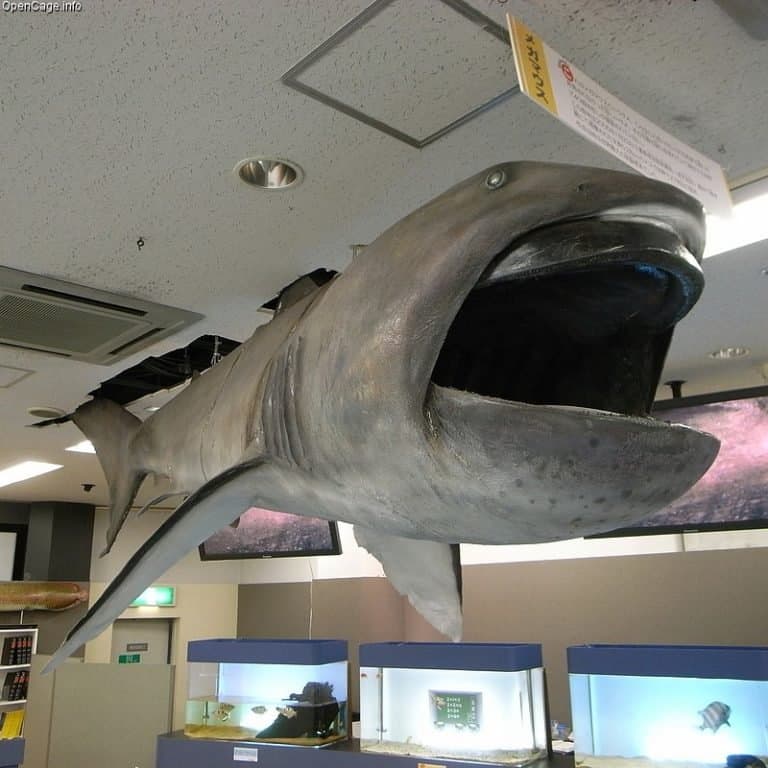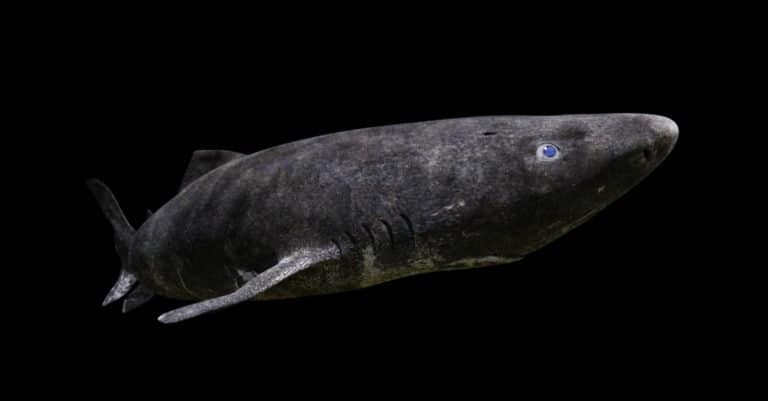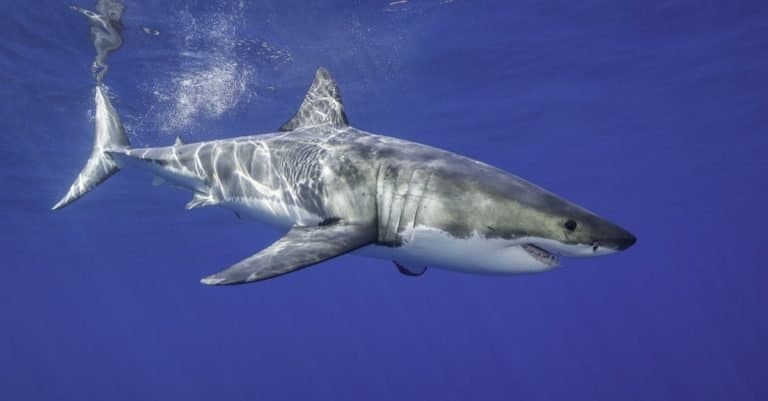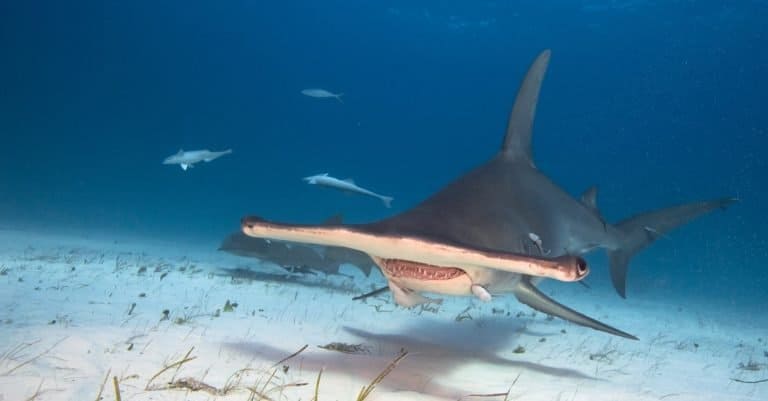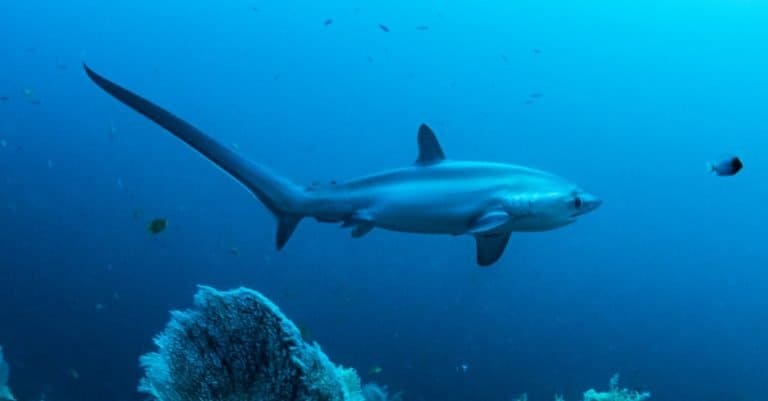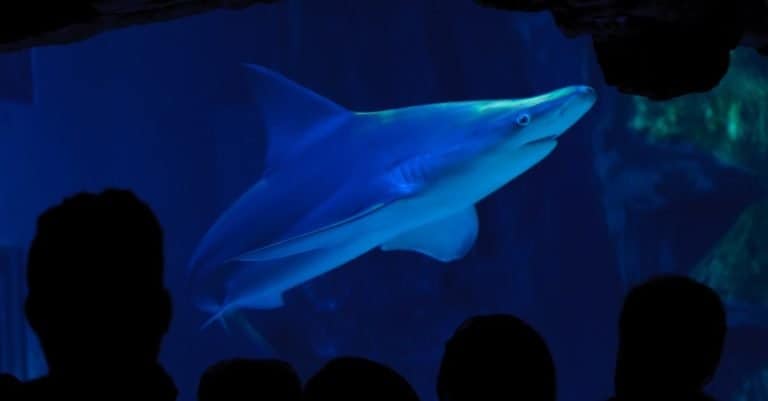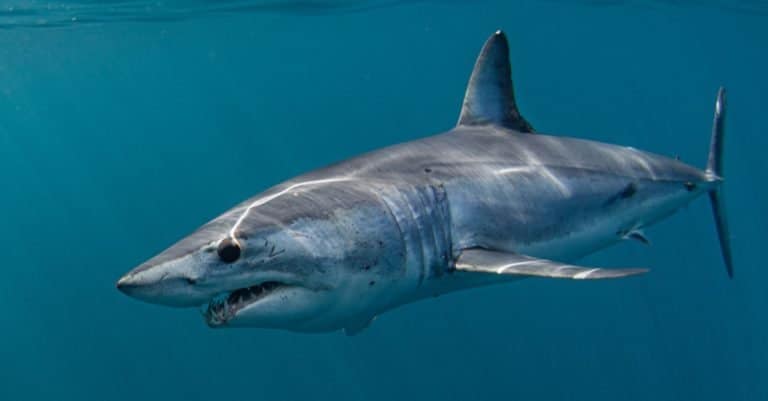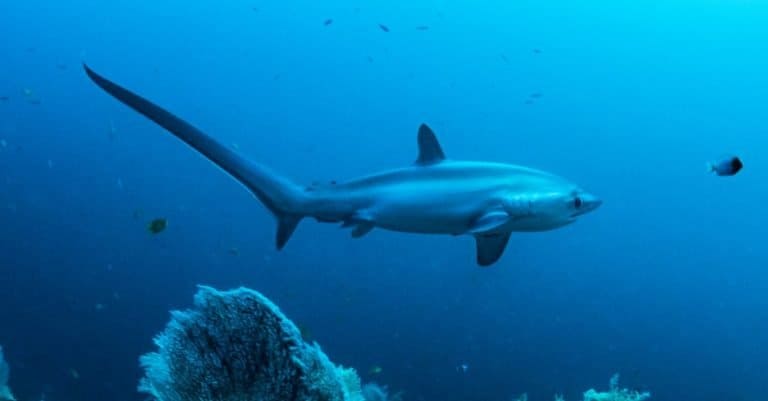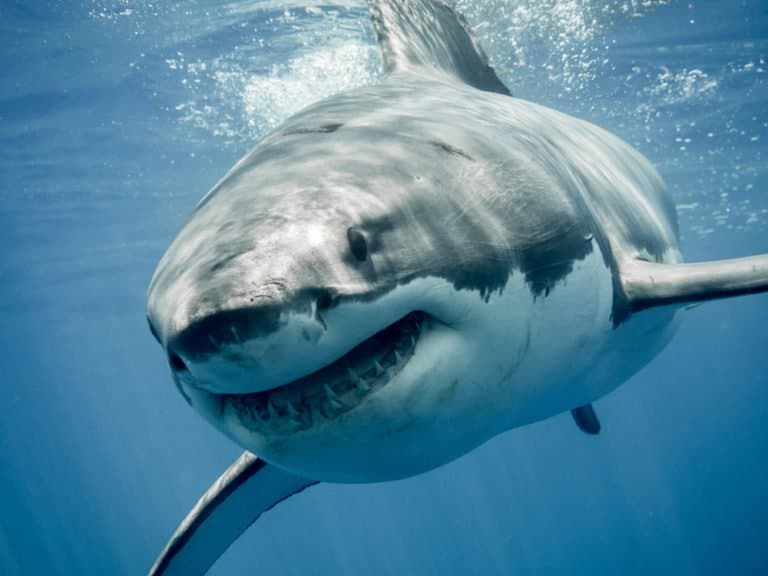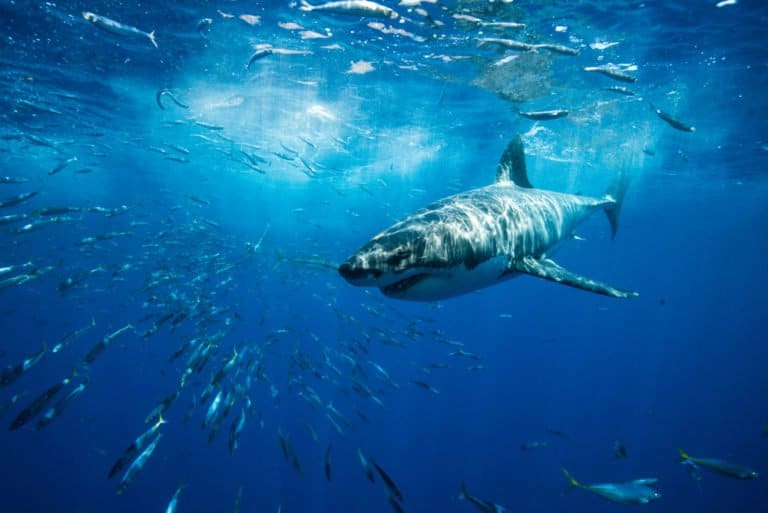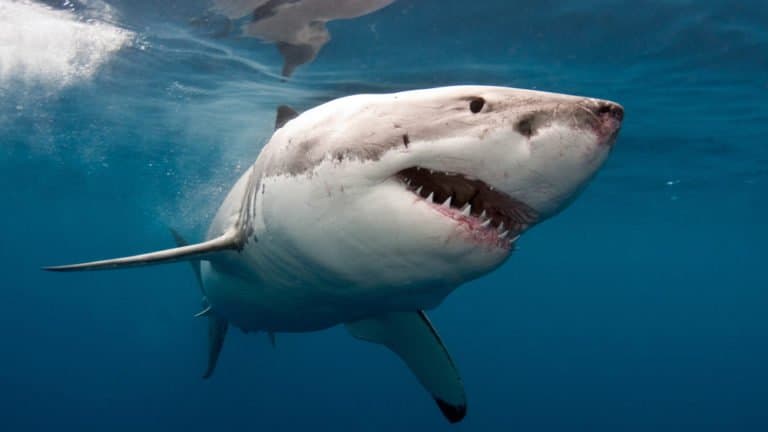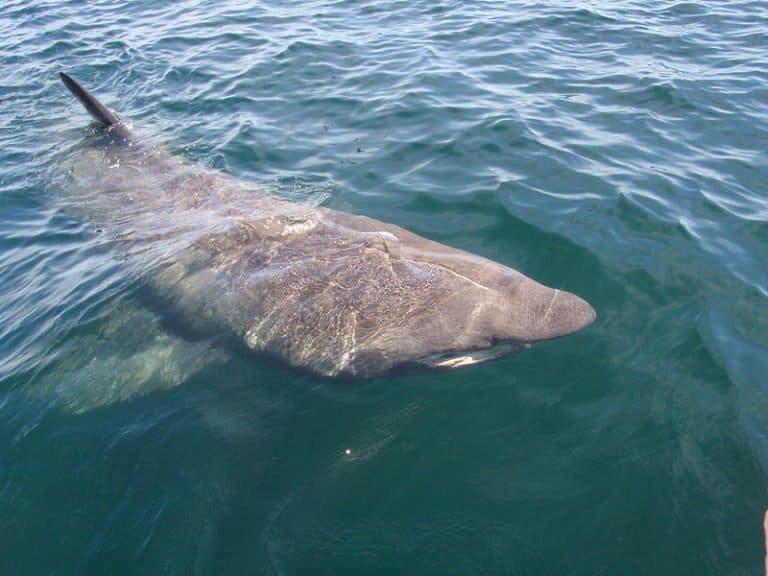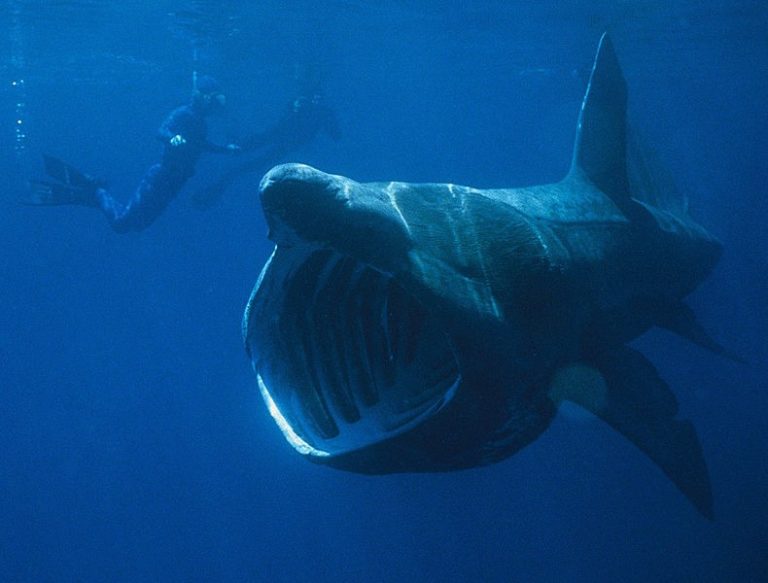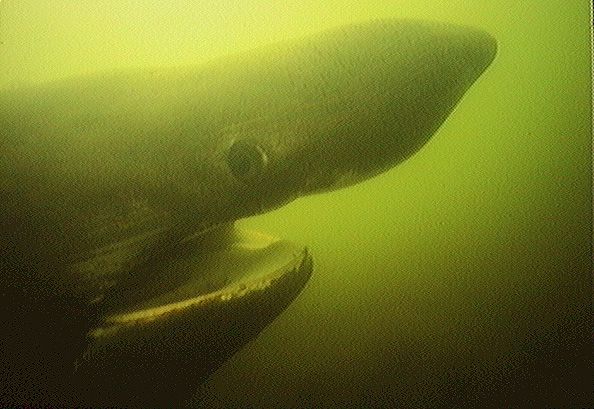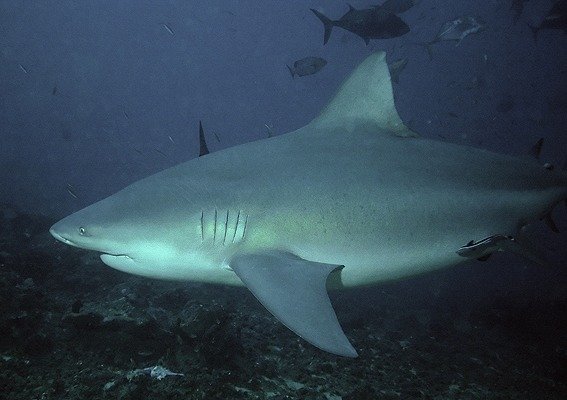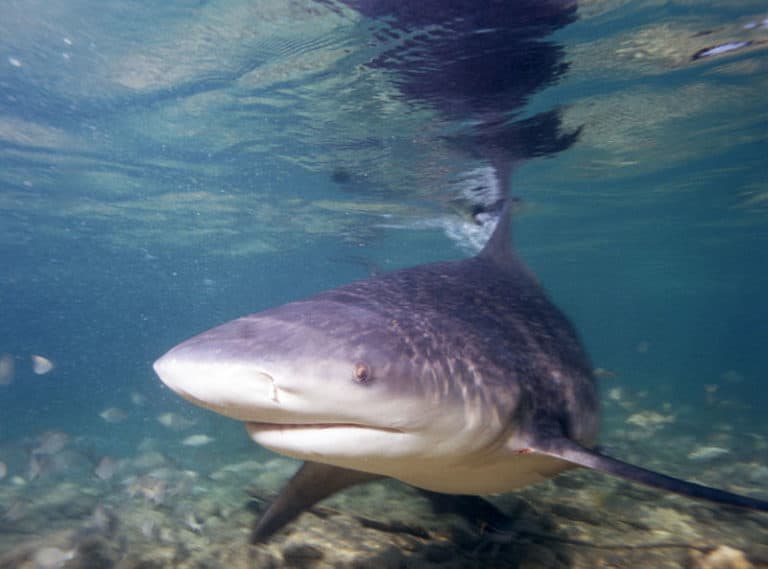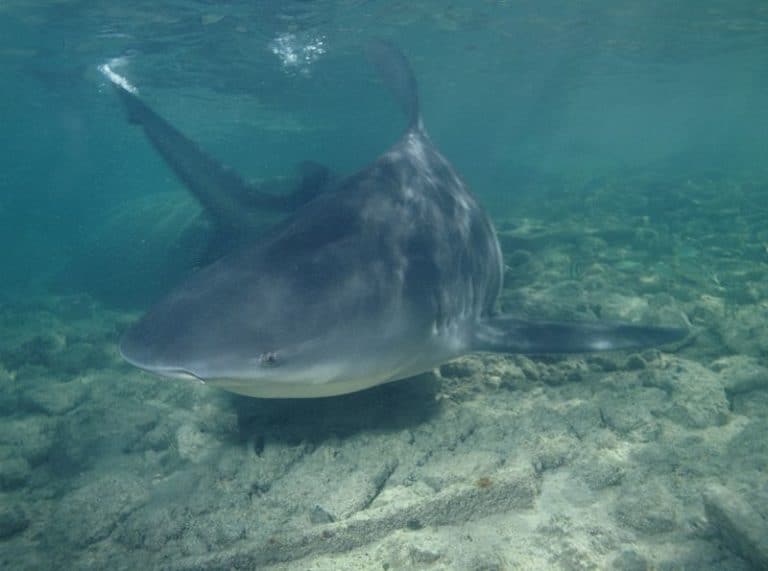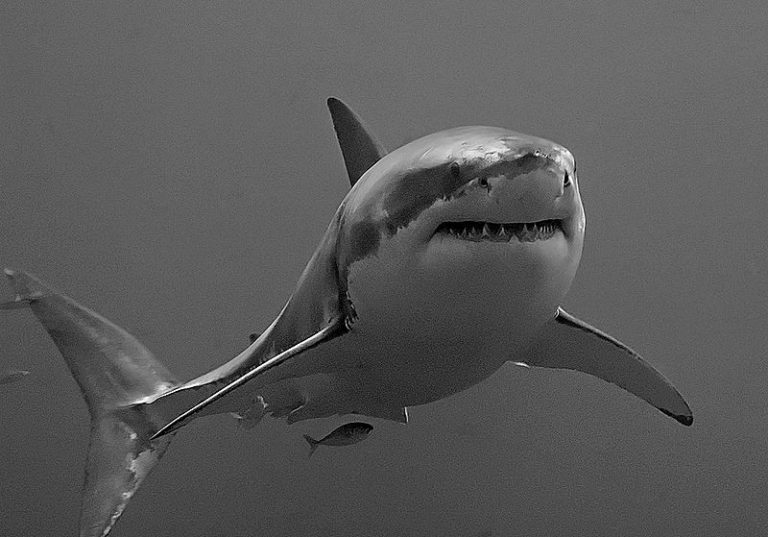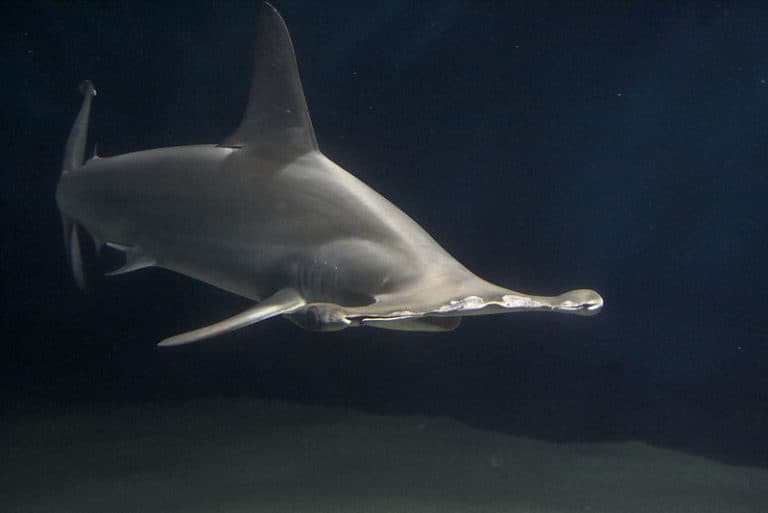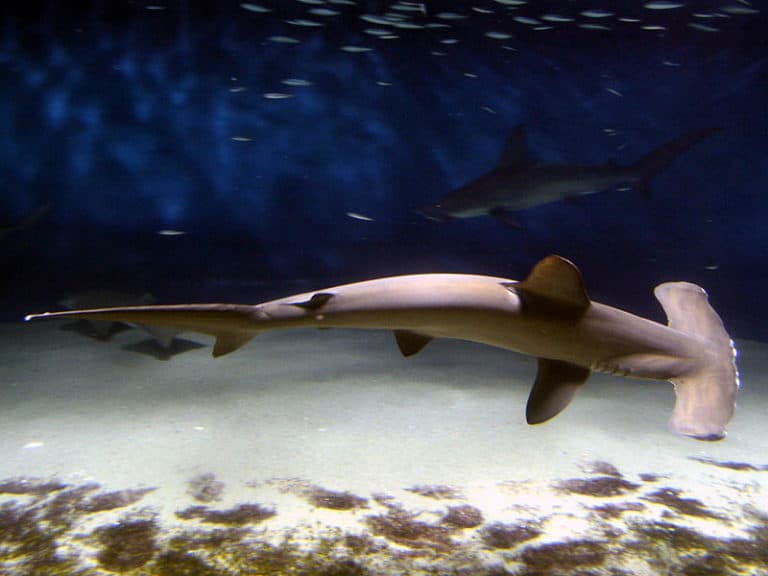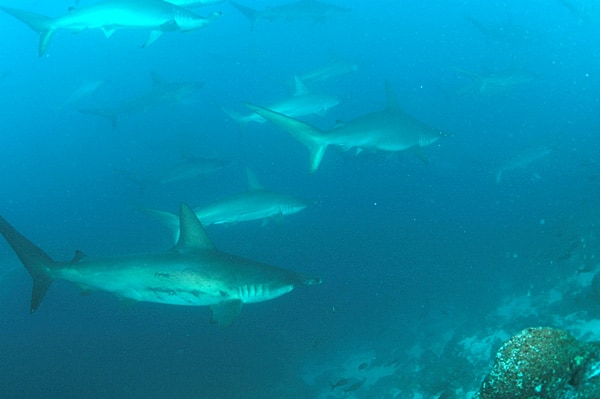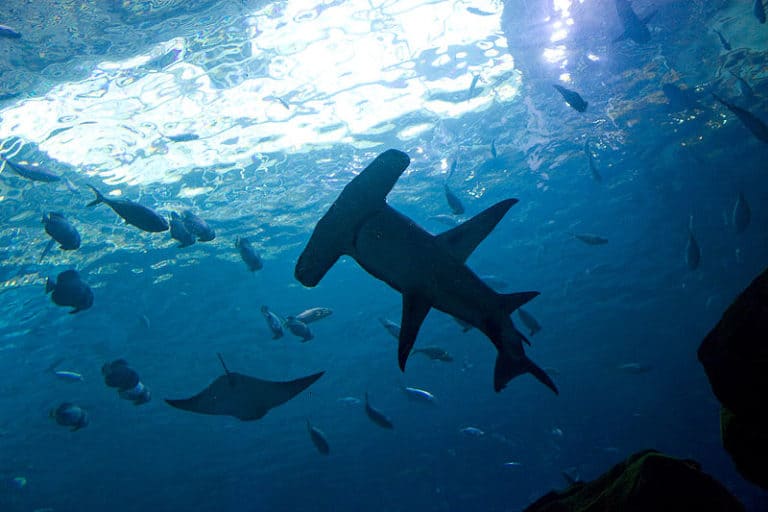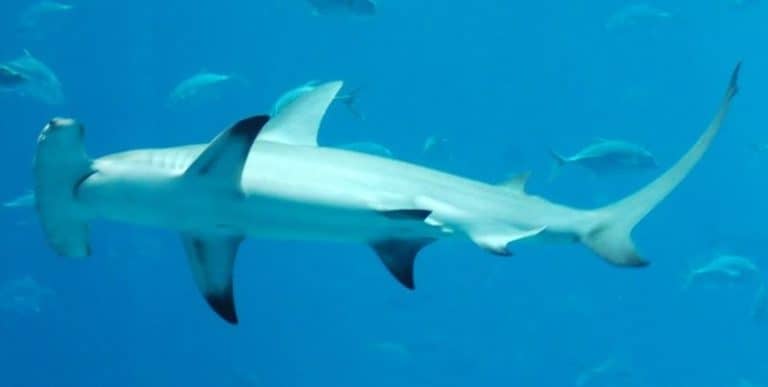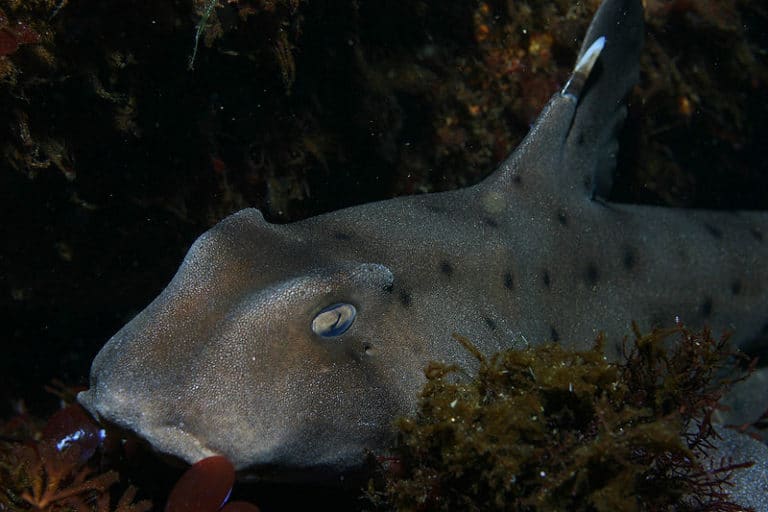Shark Animal Pictures
Advertisement
shortfin mako shark, Isurus oxyrinchus, off Cape Point, South Africa, Atlantic Ocean
One major factor in how mako sharks are able to move so fast is the unique structure of their skin, especially around the flank and fin regions of their bodies.
Prehistoric Sharks - Helicoprion
The Helicoprion has a whirl of teeth in its lower jaw.
Jambura PL, Kriwet J, CC BY 4.0, via Wikimedia Commons https://commons.wikimedia.org/wiki/File:Ptychodus_sp_Espana.jpg https://creativecommons.org/licenses/by/4.0/deed.en
Northern river sharks live in freshwater along Northern Australia and Papua New Guinea
The Xenacanthus is a prehistoric genus of sharks that went extinct at the end of the Triassic period, about 202 million years ago.
Sharks that went extinct - Orthacanthus.
Cladoselache Shark Side Profile 3D illustration - Cladoselache was a carnivorous shark that lived in North America during the Devonian Period.
Oceanic whitetips are believe to have killed more people than great white sharks
Most fish do not have eyelids. Sharks are an exception to this.
Lemon shark
A Lemon Shark lying on the sand in the Bahamas. Lemon sharks are named for their yellow-brown skin that helps them camouflage in the sandy, tropical waters they inhabit.
Great White Shark Underwater Photo
The world's largest predatory fish, great white sharks commonly weigh a few thousand pounds.
Blurred smooth lantern shark (Etmopterus bigelowi) NOAA\NMFS\Mississippi Laboratory / CC BY 3.0, from Wikimedia Commons, the free media repository https://commons.wikimedia.org/wiki/File:Etmopterus_bigelowi.jpg https://creativecommons.org/licenses/by/3.0/deed.en
The lantern shark, which is only found in the deep sea, is one of quite a few species of sharks that emit light.
Deadliest Animal in the World: Sharks Great white shark, Carcharodon carcharias
A Great white shark, Carcharodon carcharias, jumping out of the water. Great whites are the world's largest predatory fish.
By sending in a robot to document, scientists discovered that Pacific sleeper sharks have taken up residency in a volcano.
By sending in a robot to document, scientists discovered that Pacific sleeper sharks have taken up residency in a volcano.
Great Hammerhead Shark in Bimini, Bahamas
Adapting to the lack of reproduction opportunities in captivity, some sharks have been found to reproduce asexually.
SEFSC Pascagoula Laboratory; Collection of Brandi Noble, NOAA/NMFS/SEFSC, Public domain, via Wikimedia Commons
Though it can be found in many areas around the world, the spined pygmy shark rarely approaches the surface of the water.
Found on the coastal surface waters of all major oceans, the great white shark has no known natural predators. While humans are not its preferred prey, the great white shark is responsible for the largest number of unprovoked shark attacks on humans.
close-up of Sixgill Shark A very rare shot of a sixgill shark pup
close-up of Sixgill Shark
The mako shark is considered dangerous to humans because of its speed — it can attack aggressively and quickly. It has even been known to "jump" into fishing boats!
The mako shark is considered dangerous to humans because of its speed — it can attack aggressively and quickly. It has even been known to "jump" into fishing boats!
Are Sharks Mammals
Are Sharks Mammals
Biggest Shark
Biggest Shark
By opencage - http://opencage.net/pics/large_15022.asp, CC BY-SA 2.5, https://commons.wikimedia.org/w/index.php?curid=14821482
Megamouth shark, Megachasma pelagios, at Toba Aquarium, Japan
Biggest Shark: Greenland
Greenland sharks aren't adults until they're around 150 years old, and they keep growing their whole lives at a rate of one centimeter a year.
Biggest Shark: Great White
Underwater view of a great white shark during a cage diving trip at Guadalupe Island, Mexico. Although it is not the largest of all sharks, the great white is the largest predatory shark.
Biggest Shark: Great Hammerhead
This shark's unusual name comes from the unusual shape of its head, an amazing piece of anatomy built to maximize the fish's ability to find its favorite meal: stingrays.
Biggest Shark: Thresher A pelagic thresher shark, Alopias pelagicus, swims by a coral reef in the Phillipines.
A pelagic thresher shark, Alopias pelagicus, swims by a coral reef in the Philippines.
Animal Facts: Sharks
Silhouettes of people in aquarium looking at a big shark through the glass. Sharks have special electroreceptor organs that allow the shark to sense electromagnetic fields and temperature shifts in the ocean.
Fastest Sea Animal: Mako Shark
A huge Mako Shark swimming underwater offshore. The Mako Shark is not only the fastest shark in the water but one of the fastest creatures on earth
Longest Tail: The Common Thresher Shark A pelagic thresher shark, Alopias pelagicus, swims by a coral reef in the Phillipines.
The most notable feature of the thresher shark is the long, whip-like upper lobe of their tail, which is known as the caudal fin.
rossbeane - License Information.
Basking shark (Cetorhinus maximus)
Chris Gotschalk - Public Domain
Basking Shark with mouth open
Northeast Fisheries Science Center - Public Domain by U.S. National Oceanic and Atmospheric Administration
Head of a Basking Shark (Cetorhinus maximus) in the deep
Hermes - License Information.
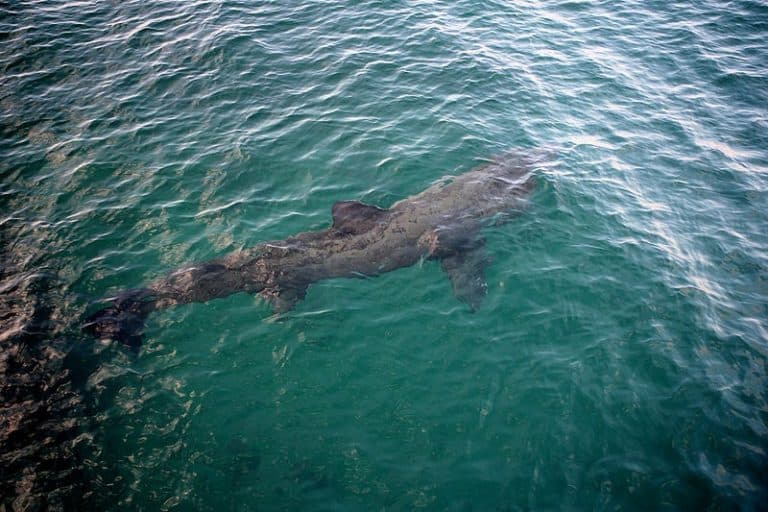
Basking shark (Cetorhinus maximus) off the Isle of Coll, Scotland
Pterantula - License Information.
Adult bull (Carcharhinus leucas) at Shark Reef Marine Preserve, Beqa Lagoon, Fiji
Albert Kok - License Information.
Bull Shark
Albert Kok - Public Domain
Bull shark (Carcharhinus leucas)
Pterantula at the English language Wikipedia - License Information.
Great White Shark
Travelbag Ltd - License Information.
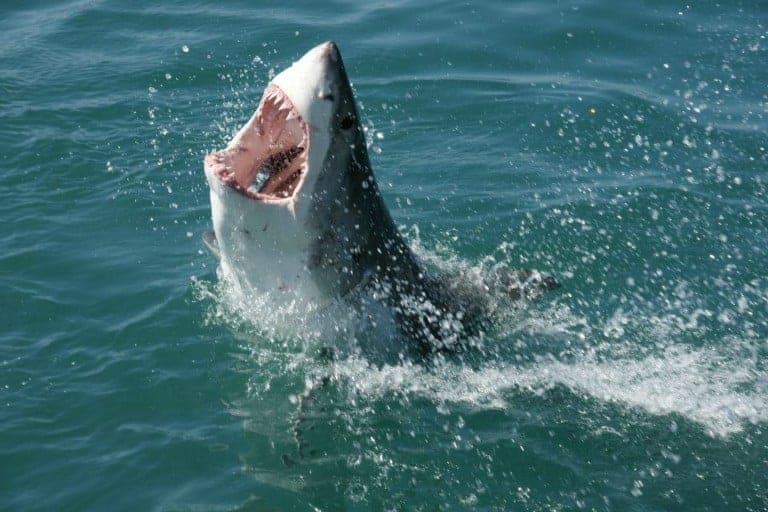
A Great White Shark showing it's teeth.
Brocken Inaglory - License Information.
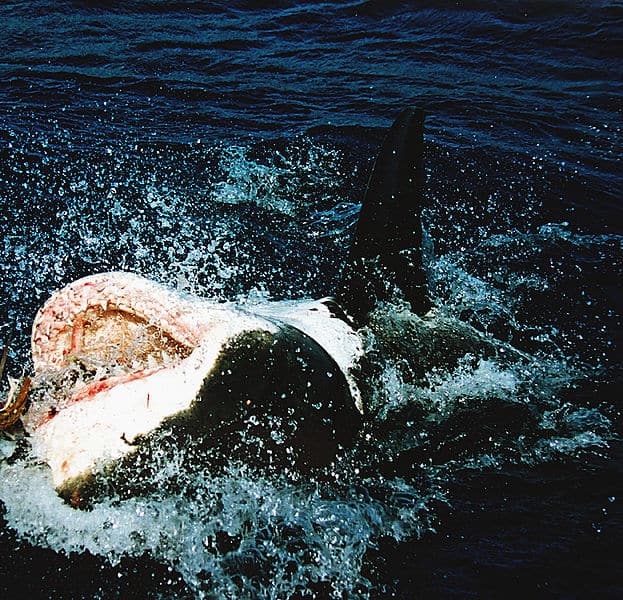
Great White Shark
Brocken Inaglory - License Information.
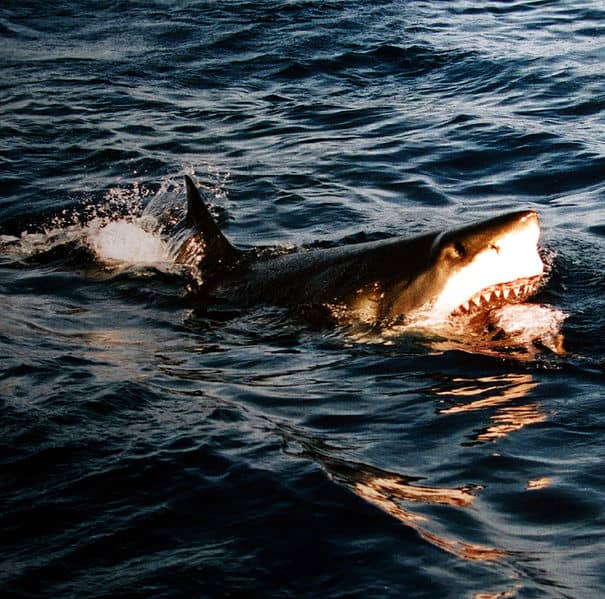
Great White Shark
Elias Levy - License Information.
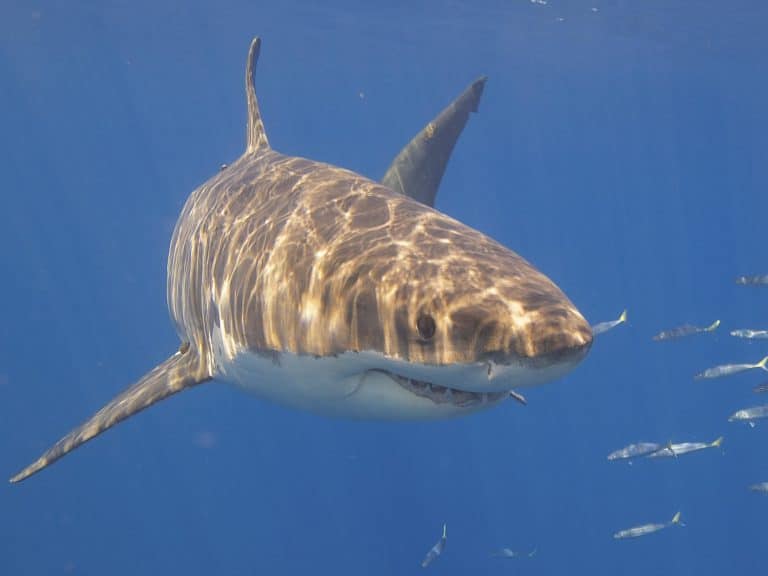
A Great White Shark.
Elias Levy - License Information.
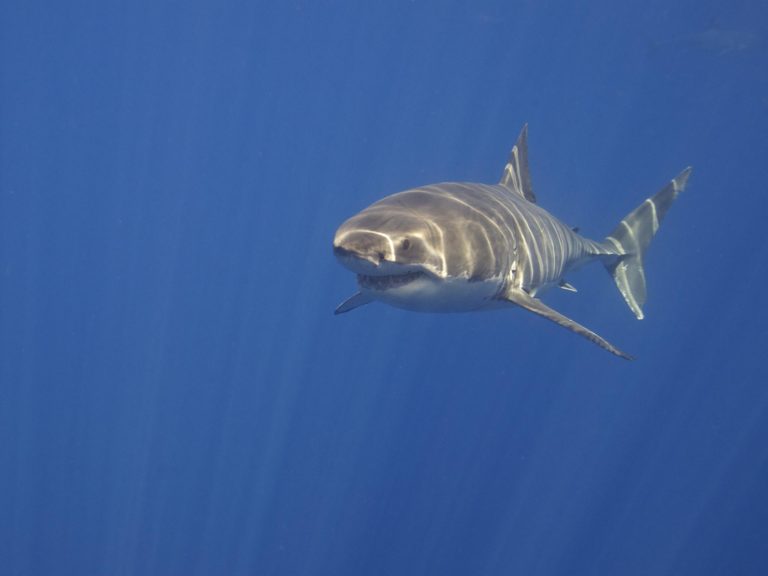
A Great White Shark swimming off the coast of Mexico.
Andre Engels - License Information.
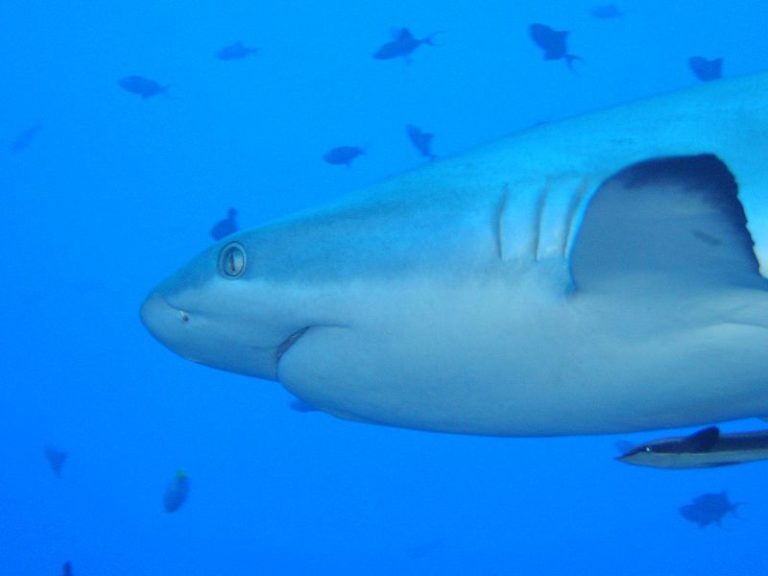
Grey Reef Shark
Albert kok - License Information.
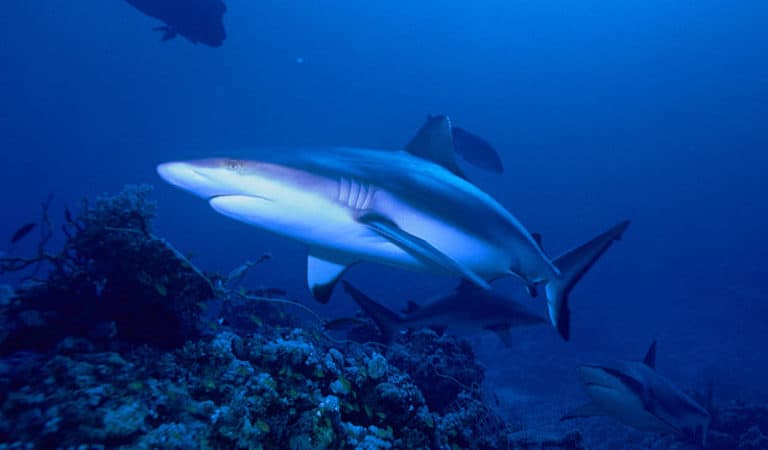
Grey Reef Shark
William Eburn - License Information.
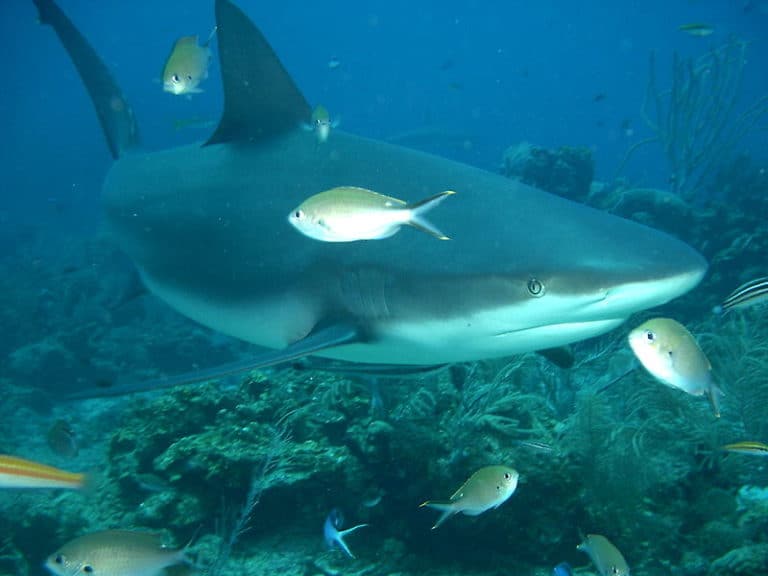
Grey Reef Shark
Matthias Kleine - License Information.
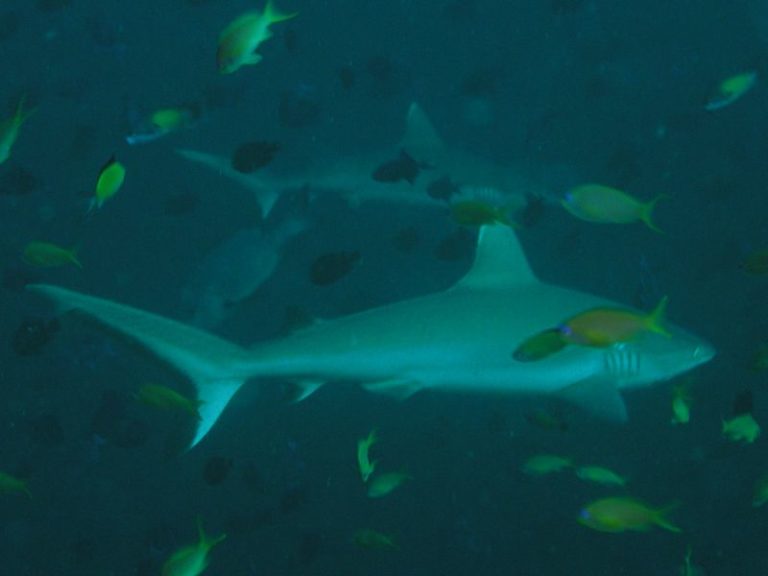
Grey Reef Shark
suneko - License Information.
Hammerhead Shark from above
Littlegreenman - Public Domain
Hammerhead Shark swimming over sand
Aquaimages - License Information.
A school of Hammerhead Sharks
Great hammerhead (Sphyrna mokarran) at the Georgia Aquarium. Gary J. Wood from Toronto, ON, Canada, CC BY-SA 2.0, via Wikimedia Commons https://commons.wikimedia.org/wiki/File:Sphyrna_mokarran_at_georgia2.jpg#mw-jump-to-license https://creativecommons.org/licenses/by-sa/2.0/deed.en
Hammerhead Shark swimming with other fish
Josh Hallett - License Information.
Hammerhead Shark swimming with other fish
Magnus Kjaergaard - License Information.
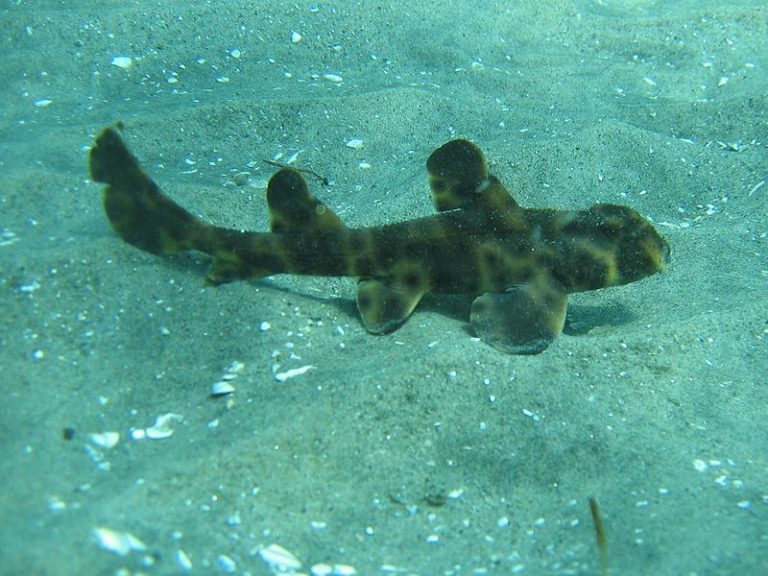
John - License Information.
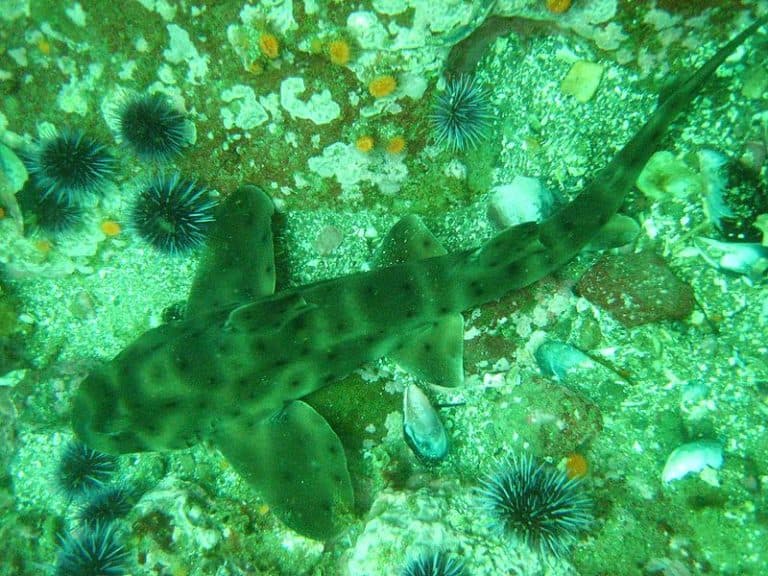
Ed Bierman - License Information.
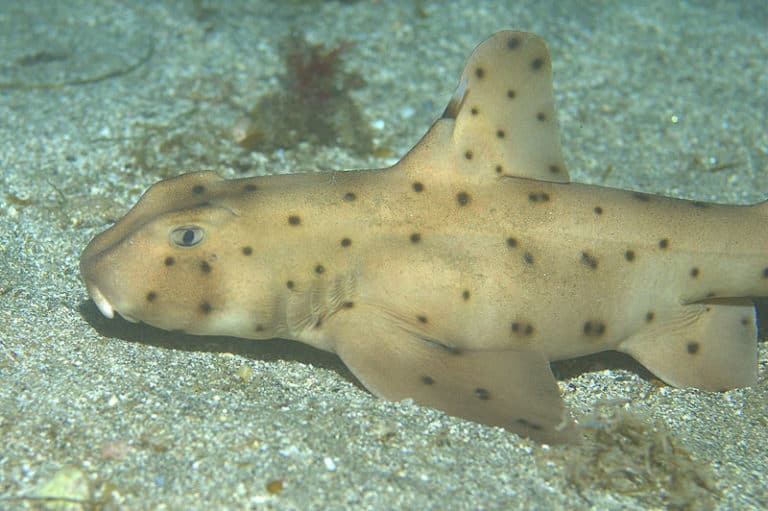
Ed Bierman - License Information.
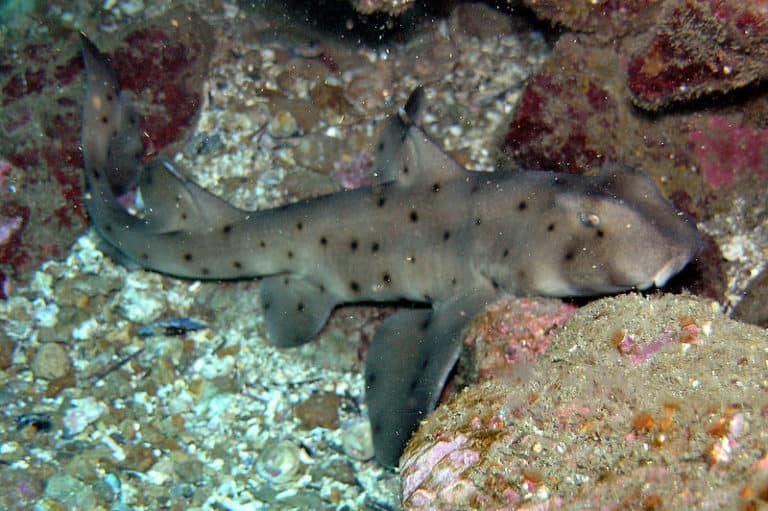
Chad King - Public Domain
Horn Shark
Erik Ogan - License Information.
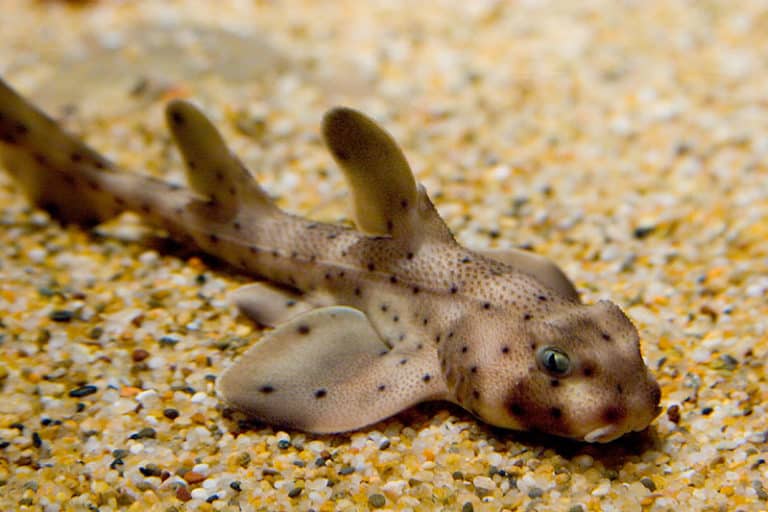
A horn shark on the ocean floor

